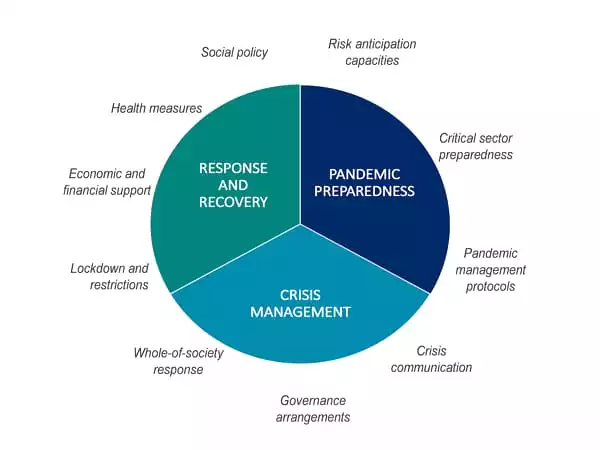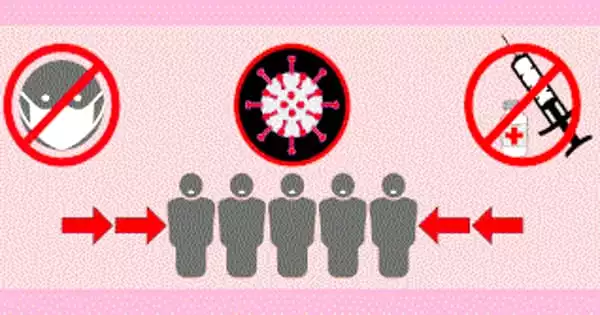Community engagement has been regarded as a critical component of previous outbreaks, such as Ebola. However, there is worry over the lack of community involvement and ‘bottom-up’ tactics adopted in COVID-19 replies thus far. Identifying how community engagement initiatives have been implemented in previous epidemics may aid in more robust COVID-19 response implementation.
Nonpharmaceutical measures, such as isolation, quarantines, and lockdowns, have been used to try to contain the epidemic, although they are often disruptive and expensive. Researchers discover novel and sustainable treatments to prevent outbreaks while minimizing economic and societal costs in a new publication. By merging a synthetic population, human behavior patterns, and a viral transmission model, they created a data-driven mobility model to mimic COVID-19 spreading throughout Hong Kong, and discovered that by controlling a small fraction of grids, the virus could be largely limited.
As of September 3, 2021, the COVID-19 pandemic had resulted in over 218 million infections and over 4.5 million fatalities. In an effort to contain the pandemic, nonpharmaceutical interventions (NPIs) like as case isolation, quarantining contacts, and complete lockdown of entire countries were employed. However, these NPIs frequently come at the expense of economic upheaval, social and mental well-being impairment, and high administrative expenditures to assure compliance.
Our findings also apply to other big cities throughout the world, such as Beijing, New York, London, and Tokyo, because COVID-19 is likely to exist continuously, and we must learn how to live with it.
Qingpeng Zhang
Given the delayed global spread of vaccination programs and the rise of many coronavirus mutations, the use of these types of therapies will continue for some time. In Chaos, published by AIP Publishing, researchers in China employ a data-driven agent-based model to develop novel and sustainable NPIs to manage outbreaks while reducing economic and societal costs.
“Based on the presented model, we offered targeted treatments that can restrict the outbreak with minimal disturbance to society. This is especially important in cities like Hong Kong, whose economy is based on international trade” said author Qingpeng Zhang.
By merging a synthetic population, human behavior patterns, and a viral transmission model, the researchers created a data-driven mobility model to mimic COVID-19 spreading in Hong Kong. This model generated 7.55 million agents to explain each Hong Kong resident’s infectious condition and mobility.

Because mobile phone data is difficult to collect in most countries, the researchers calibrated their model with open-source data so that it could be easily extended to the modeling of other cities with different demographic and people mobility patterns.
Nonpharmaceutical interventions (NPIs) aimed at reducing infectious contacts between people are an essential component of efforts to limit the effect of the next influenza pandemic. Although mathematical models suggest the potential benefits of NPIs, the historical data for the impact of such treatments in previous pandemics has not been comprehensively studied.
“We can simulate highly precise scenarios in Hong Kong using the agent-based model, and based on these simulations, we can recommend targeted interventions in only a small area of the city instead of city-level NPIs,” Zhang explained.
The researchers discovered that by managing a tiny percentage of Hong Kong’s grids (the top 1% to 2%), the virus may be largely contained. While such treatments are not as effective as citywide NPIs and mandatory COVID-19 testing, they have the advantage of causing far less disturbance in society.
The suggested approach, which leads to tailored interventions, has the ability to guide present citywide NPIs in striking a balance between lowering risk and preserving human mobility and the city’s economy.
“Our findings also apply to other big cities throughout the world, such as Beijing, New York, London, and Tokyo, because COVID-19 is likely to exist continuously, and we must learn how to live with it,” Zhang added.
The global existence of COVID-19 and its social transmission pathways necessitate social and community solutions. This may be especially useful in reaching out to marginalized people and supporting equity-informed solutions. Aligning previous community engagement experience with current COVID-19 community-based strategy recommendations demonstrates how communities may play critical and active roles in prevention and control. Countries around the world are encouraged to review current community involvement structures and employ community engagement approaches to support COVID-19 prevention and control measures that are contextually specific, acceptable, and suitable.















